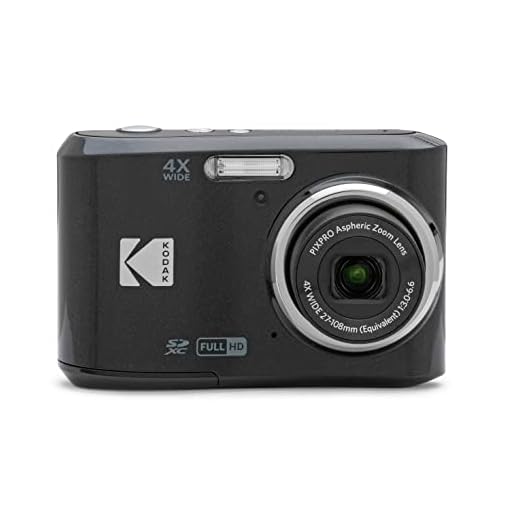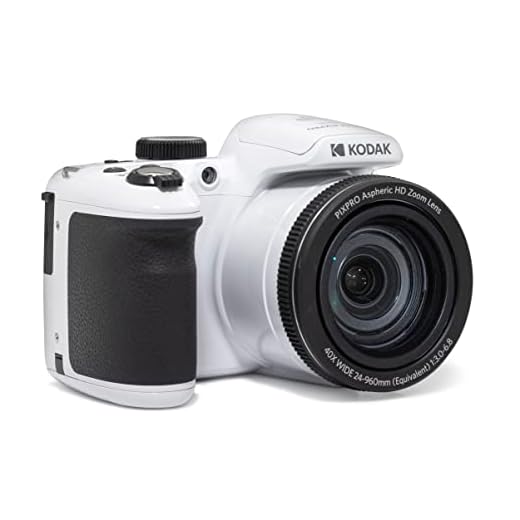




When it comes to digital cameras, one of the key factors that determine the quality of an image is the number of pixels captured by the camera sensor. But what exactly is a good pixel for a digital camera?
A pixel, short for picture element, is the smallest unit of a digital image. The more pixels a camera sensor has, the higher the resolution of the image it can produce. However, simply having more pixels doesn’t always equate to better image quality.
Factors such as pixel size, sensor type, and image processing capabilities all play a role in determining the overall image quality of a digital camera. Understanding what makes a good pixel can help you choose the right camera for your photography needs.
Understanding Pixels in Photography
When it comes to digital photography, pixels play a crucial role in capturing and displaying images. A pixel, short for picture element, is the smallest unit of a digital image. The more pixels a camera has, the higher the resolution and image quality it can produce.
Pixel Count
The pixel count of a digital camera is a measure of the total number of pixels in an image sensor. This count is often expressed in megapixels, where one megapixel is equal to one million pixels. A higher pixel count generally results in sharper and more detailed images, especially when printing or viewing them on larger screens.
Pixel Size
Pixel size refers to the physical dimensions of each pixel on the image sensor. A larger pixel size can capture more light and detail, resulting in better image quality, especially in low-light conditions. However, a higher pixel count with smaller pixels can also produce impressive results when properly processed.
| Pixel Count | Pixel Size |
|---|---|
| Higher pixel count | Sharper and more detailed images |
| Larger pixel size | Better image quality, especially in low-light |
What Determines Image Quality
When it comes to digital cameras, several factors play a crucial role in determining the quality of the images produced. Understanding these factors can help you make informed decisions when choosing a camera or adjusting settings for optimal results.
Key Factors Affecting Image Quality:
1. Sensor Size: The size of the camera sensor directly impacts image quality. Larger sensors typically capture more light and detail, resulting in sharper and more vibrant images.
2. Megapixels: While the number of megapixels is not the sole indicator of image quality, it does contribute to the level of detail a camera can capture. Higher megapixel counts allow for larger prints and more cropping flexibility.
3. Lens Quality: The quality of the lens used in a camera can significantly impact image sharpness, clarity, and color accuracy. Investing in high-quality lenses can enhance overall image quality.
4. Image Processor: The image processor in a camera plays a crucial role in image rendering, noise reduction, and color reproduction. A powerful processor can improve image quality in various lighting conditions.
5. ISO Performance: The camera’s ability to handle different ISO settings affects image quality, especially in low-light situations. Cameras with better ISO performance produce cleaner images with less noise.
6. Dynamic Range: A camera’s dynamic range determines its ability to capture details in both bright and dark areas of an image. Cameras with higher dynamic range can produce more balanced and lifelike images.
| Factors | Impact on Image Quality |
|---|---|
| Sensor Size | Sharper, more detailed images |
| Megapixels | Higher resolution, more detail |
| Lens Quality | Sharper, clearer images |
| Image Processor | Improved color accuracy, noise reduction |
| ISO Performance | Less noise in low-light conditions |
| Dynamic Range | More balanced and lifelike images |
Importance of Pixel Count
Pixel count is a crucial factor to consider when choosing a digital camera. The number of pixels determines the level of detail and clarity in the images captured by the camera. A higher pixel count results in sharper and more detailed images, making them suitable for larger prints or digital zooming without losing quality.
Having a higher pixel count also allows for more flexibility when it comes to cropping and editing photos. With more pixels, you can crop a photo without losing too much detail, allowing you to create different compositions or focus on specific areas of the image.
Additionally, a higher pixel count can improve the overall image quality, especially in low-light conditions. More pixels mean better light sensitivity and less noise in the final image, resulting in clearer and more vibrant photos.
However, it’s important to note that pixel count is not the only factor that determines image quality. Other factors such as sensor size, lens quality, and image processing also play a significant role in producing high-quality photos. Nevertheless, having a higher pixel count can definitely make a difference in the clarity and detail of your images.
Choosing the Right Pixel Size
When selecting a digital camera, one of the key factors to consider is the pixel size. Pixels are the tiny dots that make up an image, and the more pixels a camera has, the higher the resolution of the images it can produce. However, a higher pixel count doesn’t always mean better image quality.
For most casual photographers, a camera with a pixel count between 12 and 24 megapixels is sufficient for everyday use. This range provides a good balance between image quality and file size. Cameras with higher pixel counts, such as 36 megapixels or more, are better suited for professional photographers who require extremely high-resolution images.
It’s also important to consider the size of the sensor in relation to the pixel count. A larger sensor can capture more light and produce better image quality, even with fewer pixels. So, when choosing a digital camera, make sure to consider both the pixel count and the sensor size to ensure you get the best results for your photography needs.
Pixel Size vs. Resolution
When it comes to digital cameras, understanding the difference between pixel size and resolution is crucial for capturing high-quality images. Pixel size refers to the physical dimensions of each individual pixel on the camera sensor, while resolution is the total number of pixels in an image.
Generally, larger pixel sizes result in better image quality, especially in low-light conditions, as they can capture more light and detail. On the other hand, higher resolution cameras can produce larger images with more detail, but the quality may suffer if the pixel size is too small.
Pixel Size
The pixel size is measured in micrometers (µm) and is an important factor in determining the camera’s performance. Larger pixel sizes are more sensitive to light, resulting in less noise and better dynamic range. However, larger pixel sizes may limit the resolution of the camera, especially in terms of the maximum image size.
Resolution
Resolution, on the other hand, is measured in megapixels and determines the total number of pixels in an image. Higher resolution cameras can produce sharper and more detailed images, but the trade-off is often a decrease in pixel size and potential loss of image quality in low-light conditions.
| Aspect | Pixel Size | Resolution |
|---|---|---|
| Low-light performance | Larger pixels are better | No direct impact |
| Detail and sharpness | No direct impact | Higher resolution is better |
| Dynamic range | Larger pixels provide better dynamic range | No direct impact |
Benefits of Higher Pixel Count
Having a higher pixel count in a digital camera offers several advantages. Firstly, higher pixel count results in sharper and more detailed images, allowing for better quality photos. This is especially important when capturing intricate details or when printing large-sized images.
Additionally, higher pixel count cameras provide more flexibility when it comes to cropping and editing photos. With more pixels, you can crop an image without losing as much quality, and you can make larger prints without sacrificing sharpness.
Furthermore, higher pixel count cameras often perform better in low light conditions, as they can capture more light and detail, resulting in clearer and less noisy images.
In summary, a higher pixel count in a digital camera can significantly enhance image quality, provide more editing flexibility, and improve performance in various shooting conditions.
Limitations of Lower Pixel Count
While lower pixel count cameras may be more affordable, they come with some limitations. One of the main drawbacks is the reduced ability to capture fine details and produce high-quality images. Lower pixel count cameras may struggle in low-light conditions and produce noisy or grainy images. Additionally, the lower resolution may limit the size at which images can be printed or displayed without losing quality. For professional photography or situations where high-resolution images are necessary, a camera with a higher pixel count is recommended.
Factors to Consider in Pixel Selection
Choosing the right pixel count for your digital camera is crucial to capturing high-quality images. Here are some key factors to consider when selecting the pixel count:
1. Resolution
The pixel count directly affects the resolution of your images. Higher pixel counts result in sharper and more detailed photos, especially when printing or enlarging images. Consider the level of detail you need in your photos when choosing the pixel count.
2. File Size
Higher pixel counts produce larger image files, which may require more storage space on your memory card and computer. Consider the storage capacity of your devices and the ease of transferring and storing large files when selecting the pixel count.
- 3. Printing Needs
- 4. Low Light Performance
- 5. Camera Budget
FAQ
What is pixel size and why is it important in a digital camera?
Pixel size refers to the physical dimensions of individual pixels on a camera sensor. It is important because larger pixels can capture more light, resulting in better image quality, especially in low light conditions.
How does the number of pixels affect the image quality of a digital camera?
The number of pixels, or resolution, determines the level of detail in an image. More pixels allow for higher resolution and sharper images, but excessive pixel count may not always translate to better quality if the sensor is small.
What is the significance of megapixels in a digital camera?
Megapixels indicate the total number of pixels in an image sensor. While a higher megapixel count can offer more detail and flexibility for cropping, the quality of the sensor and other factors like pixel size also play a crucial role in image quality.
How do I know what pixel count is suitable for my photography needs?
The optimal pixel count depends on your intended use of the images. For general photography and social media sharing, a camera with 12-24 megapixels is usually sufficient. Higher resolutions are more beneficial for professional printing or detailed work.
Can a smaller pixel size be better in certain situations for digital cameras?
In some cases, smaller pixels can be advantageous, particularly in cameras with high megapixel counts and advanced noise reduction technology. However, larger pixels generally offer better performance in low light conditions and improved dynamic range.








